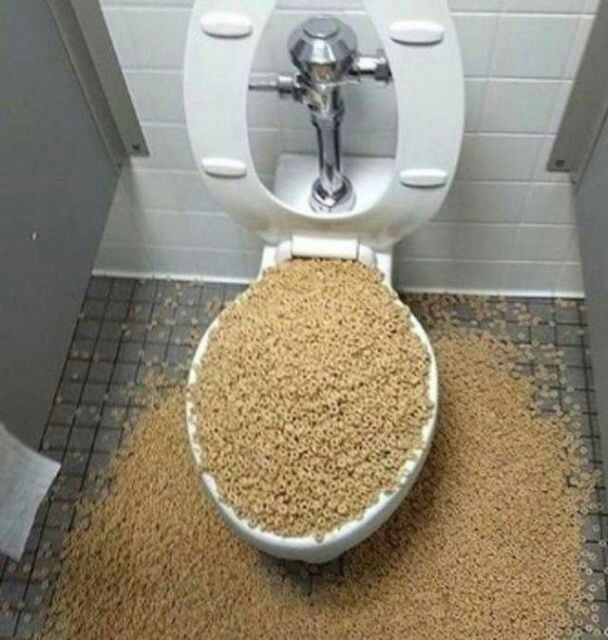Is it Allowed to Flush Food in the Toilet?
Is it Allowed to Flush Food in the Toilet?
Blog Article
Just about everyone is bound to have their private idea about Is it safe to flush food (especially rice) down the toilet?.

Introduction
Many individuals are often faced with the issue of what to do with food waste, especially when it comes to leftovers or scraps. One usual inquiry that emerges is whether it's fine to flush food down the bathroom. In this post, we'll look into the reasons that people may take into consideration purging food, the effects of doing so, and alternate methods for appropriate disposal.
Reasons that individuals could consider purging food
Absence of recognition
Some individuals might not recognize the potential harm caused by flushing food down the toilet. They may erroneously think that it's a safe method.
Ease
Purging food down the commode may feel like a fast and easy service to disposing of unwanted scraps, particularly when there's no close-by trash can offered.
Idleness
In some cases, individuals might simply select to flush food out of large negligence, without considering the effects of their actions.
Consequences of flushing food down the commode
Environmental effect
Food waste that winds up in rivers can add to pollution and harm aquatic ecosystems. Additionally, the water utilized to flush food can strain water resources.
Plumbing concerns
Purging food can lead to stopped up pipes and drains pipes, triggering expensive plumbing repairs and hassles.
Types of food that should not be purged
Fibrous foods
Foods with fibrous structures such as celery or corn husks can get tangled in pipelines and trigger blockages.
Starchy foods
Starchy foods like pasta and rice can take in water and swell, resulting in blockages in pipes.
Oils and fats
Greasy foods like bacon or cooking oils need to never ever be purged down the toilet as they can solidify and create obstructions.
Proper disposal techniques for food waste
Utilizing a waste disposal unit
For homes geared up with garbage disposals, food scraps can be ground up and purged via the plumbing system. However, not all foods are suitable for disposal in this fashion.
Recycling
Certain food packaging materials can be reused, lowering waste and minimizing environmental effect.
Composting
Composting is an environmentally friendly means to get rid of food waste. Organic products can be composted and utilized to enhance soil for horticulture.
The value of correct waste administration
Lowering ecological damage
Correct waste administration practices, such as composting and recycling, assistance lessen contamination and preserve natural deposits for future generations.
Shielding plumbing systems
By staying clear of the method of flushing food down the bathroom, house owners can stop pricey plumbing repairs and preserve the honesty of their plumbing systems.
Conclusion
In conclusion, while it might be appealing to flush food down the toilet for comfort, it is very important to recognize the potential consequences of this action. By taking on appropriate waste management methods and dealing with food waste properly, individuals can contribute to healthier pipes systems and a cleaner environment for all.
FLUSH FOOD DOWN THE TOILET?
FLUSHING FOOD CAN CAUSE BLOCKED DRAINS IN YOUR HOME
All of the plumbing fixtures in your home are connected to the same sewer pipe outside of your home. This outdoor sewer pipe is responsible for transporting all the wastewater from your home to the Council sewer mains. Even small pieces of food that go down the kitchen sink can cause problems for your sewer. It should therefore be obvious that flushing larger bits of food, such as meat, risks a clog in either the toilet itself or the sewer pipes. Flushing greasy food is even more problematic because oil coagulates when it cools, coating the interior lining of your pipes.
THE TOILET IS NOT A BIN
Food isn’t the only thing that people shouldn’t be flushing down the toilet. People use the toilet to dispose of all kinds of things such as tampons, makeup wipes, dental floss, kitty litter and even underwear. Water goes to great lengths to educate residents about the high costs and stress placed on wastewater treatment systems simply from people flushing the wrong stuff down the toilet. It costs taxpayers millions of dollars each year, and homeowners thousands in blocked drain repairs.
FLUSHING FOOD IS A WASTE OF WATER
Flushing food is a waste of our most precious resource - water. In June this year Level 1 water restrictions were introduced to protect water supply from drought conditions. Much of New South Wales continues to be affected by prolonged drought with recent figures revealing up to 97 per cent of the state remains in drought. Depending on whether you have a single or dual flush toilet, every single flush uses between five and 11 litres of water. In the current climate this is a huge amount of water to be wasting on flushing food that should be placed in the bin (or better yet, the compost).
https://www.jabplumbingsolutions.com.au/blog/can-you-flush-food-down-the-toilet

We were made aware of that editorial about Is it safe to flush food (especially rice) down the toilet? from a good friend on another web blog. Sharing is caring. You won't know, you may be doing someone a favor. I am grateful for being here. Come back soon.
Request A Quote Report this page